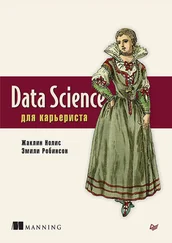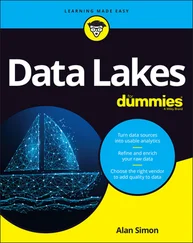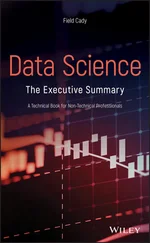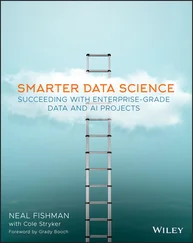1 ...8 9 10 12 13 14 ...23  Software as a Service (SaaS) is a term that describes cloud-hosted software services that are made available to users via the Internet. Examples of popular SaaS companies include Salesforce, Slack, HubSpot, and so many more.
Software as a Service (SaaS) is a term that describes cloud-hosted software services that are made available to users via the Internet. Examples of popular SaaS companies include Salesforce, Slack, HubSpot, and so many more.
Defining data engineering
If engineering is the practice of using science and technology to design and build systems that solve problems, you can think of data engineering as the engineering domain that’s dedicated to building and maintaining data systems for overcoming data processing bottlenecks and data handling problems that arise from handling the high volume, velocity, and variety of big data.
Data engineers use skills in computer science and software engineering to design systems for, and solve problems with, handling and manipulating big datasets. Data engineers often have experience working with (and designing) real-time processing frameworks and massively parallel processing (MPP) platforms (discussed later in this chapter), as well as with RDBMSs. They generally code in Java, C++, Scala, or Python. They know how to deploy Hadoop MapReduce or Spark to handle, process, and refine big data into datasets with more manageable sizes. Simply put, with respect to data science, the purpose of data engineering is to engineer large-scale data solutions by building coherent, modular, and scalable data processing platforms from which data scientists can subsequently derive insights.
 Most engineered systems are built systems — they are constructed or manufactured in the physical world. Data engineering is different, though. It involves designing, building, and implementing software solutions to problems in the data world — a world that can seem abstract when compared to the physical reality of the Golden Gate Bridge or the Aswan Dam.
Most engineered systems are built systems — they are constructed or manufactured in the physical world. Data engineering is different, though. It involves designing, building, and implementing software solutions to problems in the data world — a world that can seem abstract when compared to the physical reality of the Golden Gate Bridge or the Aswan Dam.
Using data engineering skills, you can, for example:
Integrate data pipelines with the natural language processing (NLP) services that were built by data scientists at your company.
Build mission-critical data platforms capable of processing more than 10 billion transactions per day.
Tear down data silos by finally migrating your company’s data from a more traditional on-premise data storage environment to a cutting-edge cloud warehouse.
Enhance and maintain existing data infrastructure and data pipelines.
Data engineers need solid skills in computer science, database design, and software engineering to be able to perform this type of work.
Comparing machine learning engineers, data scientists, and data engineers
The roles of data scientist, machine learning engineer, and data engineer are frequently conflated by hiring managers. If you look around at most position descriptions for companies that are hiring, they often mismatch the titles and roles or simply expect applicants to be the Swiss army knife of data skills and be able to do them all.
 If you’re hiring someone to help make sense of your data, be sure to define the requirements clearly before writing the position description. Because data scientists must also have subject matter expertise in the particular areas in which they work, this requirement generally precludes data scientists from also having much expertise in data engineering. And, if you hire a data engineer who has data science skills, that person generally won’t have much subject matter expertise outside of the data domain. Be prepared to call in a subject matter expert (SME) to help out.
If you’re hiring someone to help make sense of your data, be sure to define the requirements clearly before writing the position description. Because data scientists must also have subject matter expertise in the particular areas in which they work, this requirement generally precludes data scientists from also having much expertise in data engineering. And, if you hire a data engineer who has data science skills, that person generally won’t have much subject matter expertise outside of the data domain. Be prepared to call in a subject matter expert (SME) to help out.
Because many organizations combine and confuse roles in their data projects, data scientists are sometimes stuck having to learn to do the job of a data engineer — and vice versa. To come up with the highest-quality work product in the least amount of time, hire a data engineer to store, migrate, and process your data; a data scientist to make sense of it for you; and a machine learning engineer to bring your machine learning models into production.
Lastly, keep in mind that data engineer, machine learning engineer, and data scientist are just three small roles within a larger organizational structure. Managers, middle-level employees, and business leaders also play a huge part in the success of any data-driven initiative.
Storing and Processing Data for Data Science
A lot has changed in the world of big data storage options since the Hadoop debacle I mention earlier in this chapter. Back then, almost all business leaders clamored for on-premise data storage. Delayed by years due to the admonitions of traditional IT leaders, corporate management is finally beginning to embrace the notion that storing and processing big data with a reputable cloud service provider is the most cost-effective and secure way to generate value from enterprise data. In the following sections, you see the basics of what’s involved in both cloud and on-premise big data storage and processing.
Storing data and doing data science directly in the cloud
After you have realized the upside potential of storing data in the cloud, it’s hard to look back. Storing data in a cloud environment offers serious business advantages, such as these:
Faster time-to-market: Many big data cloud service providers take care of the bulk of the work that’s required to configure, maintain, and provision the computing resources that are required to run jobs within a defined system – also known as a compute environment. This dramatically increases ease of use, and ultimately allows for faster time-to-market for data products.
Enhanced flexibility: Cloud services are extremely flexible with respect to usage requirements. If you set up in a cloud environment and then your project plan changes, you can simply turn off the cloud service with no further charges incurred. This isn’t the case with on-premise storage, because once you purchase the server, you own it. Your only option from then on is to extract the best possible value from a noncancelable resource.
Security: If you go with reputable cloud service providers — like Amazon Web Services, Google Cloud, or Microsoft Azure — your data is likely to be a whole lot more secure in the cloud than it would be on-premise. That’s because of the sheer number of resources that these megalith players dedicate to protecting and preserving the security of the data they store. I can’t think of a multinational company that would have more invested in the security of its data infrastructure than Google, Amazon, or Microsoft.
A lot of different technologies have emerged in the wake of the cloud computing revolution, many of which are of interest to those trying to leverage big data. The next sections examine a few of these new technologies.
Using serverless computing to execute data science
When we talk about serverless computing, the term serverless is quite misleading because the computing indeed takes place on a server. Serverless computing really refers to computing that’s executed in a cloud environment rather than on your desktop or on-premise at your company. The physical host server exists, but it's 100 percent supported by the cloud computing provider retained by you or your company.
One great tragedy of modern-day data science is the amount of time data scientists spend on non-mission-critical tasks like data collection, data cleaning and reformatting, data operations, and data integration. By most estimates, only 10 percent of a data scientist's time is spent on predictive model building — the rest of it is spent trying to prepare the data and the data infrastructure for that mission-critical task they’ve been retained to complete. Serverless computing has been a game-changer for the data science industry because it decreases the down-time that data scientists spend in preparing data and infrastructure for their predictive models.
Читать дальше
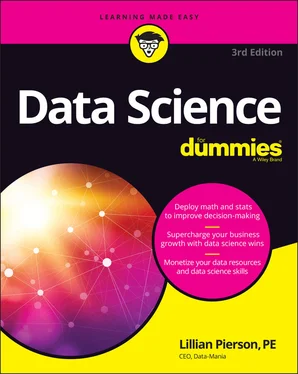
 Software as a Service (SaaS) is a term that describes cloud-hosted software services that are made available to users via the Internet. Examples of popular SaaS companies include Salesforce, Slack, HubSpot, and so many more.
Software as a Service (SaaS) is a term that describes cloud-hosted software services that are made available to users via the Internet. Examples of popular SaaS companies include Salesforce, Slack, HubSpot, and so many more. Most engineered systems are built systems — they are constructed or manufactured in the physical world. Data engineering is different, though. It involves designing, building, and implementing software solutions to problems in the data world — a world that can seem abstract when compared to the physical reality of the Golden Gate Bridge or the Aswan Dam.
Most engineered systems are built systems — they are constructed or manufactured in the physical world. Data engineering is different, though. It involves designing, building, and implementing software solutions to problems in the data world — a world that can seem abstract when compared to the physical reality of the Golden Gate Bridge or the Aswan Dam. If you’re hiring someone to help make sense of your data, be sure to define the requirements clearly before writing the position description. Because data scientists must also have subject matter expertise in the particular areas in which they work, this requirement generally precludes data scientists from also having much expertise in data engineering. And, if you hire a data engineer who has data science skills, that person generally won’t have much subject matter expertise outside of the data domain. Be prepared to call in a subject matter expert (SME) to help out.
If you’re hiring someone to help make sense of your data, be sure to define the requirements clearly before writing the position description. Because data scientists must also have subject matter expertise in the particular areas in which they work, this requirement generally precludes data scientists from also having much expertise in data engineering. And, if you hire a data engineer who has data science skills, that person generally won’t have much subject matter expertise outside of the data domain. Be prepared to call in a subject matter expert (SME) to help out.![Роман Зыков - Роман с Data Science. Как монетизировать большие данные [litres]](/books/438007/roman-zykov-roman-s-data-science-kak-monetizirova-thumb.webp)




